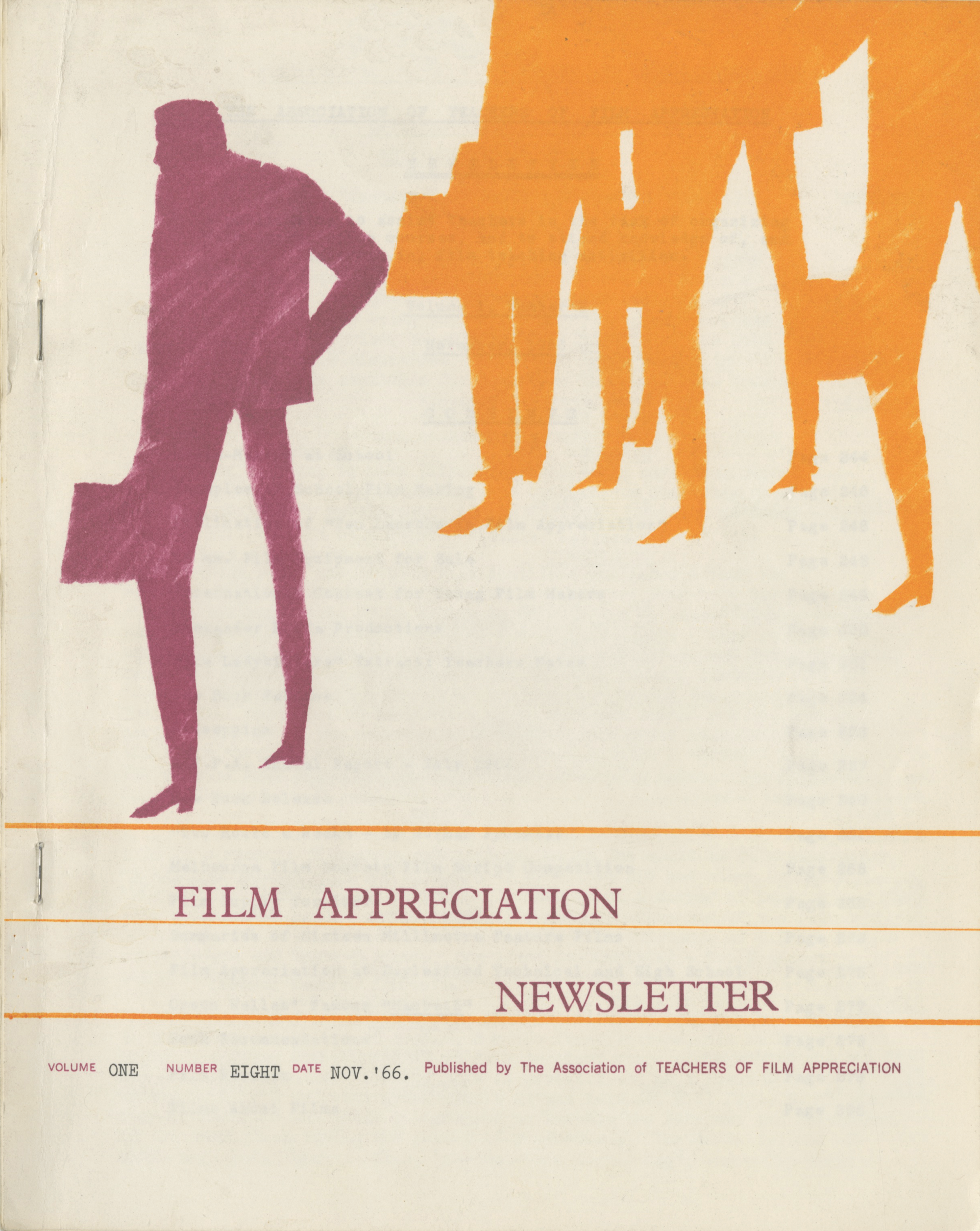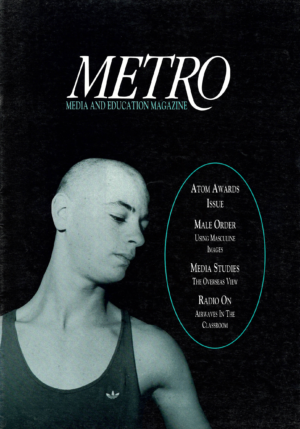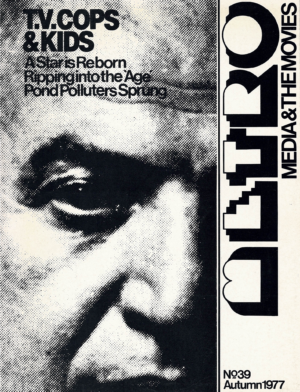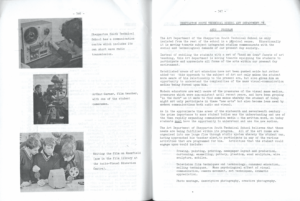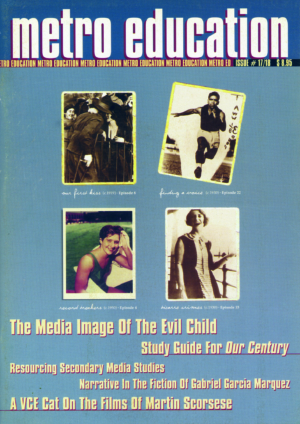Our beloved teaching association didn’t really take off until the Association of Teachers of Film Appreciation (ATFA), founded in 1963, became the Association of Teachers of Film and Video (ATFAV) in 1974 and Metro in its current form was born. ATOM – first as Association for the Teachers of Media from 1978, then Australian Teachers of Media from 1981 – came about not long after. During my time (including my turn as committee president from 1972 to 1975, after which I was awarded a life membership), I saw it change from a largely film-appreciation-oriented group to a platform that included a wide range of media formats and a diverse range of teachers.
In 1974, we had an extraordinary general meeting at the Trak Cinema in Toorak to discuss the rapidly changing face of the association, the widening of the needs of our new membership base, our film advisory service, and our inclusion of photography and video – that is, we were morphing into a wider vehicle for teachers of media. Following then-treasurer Wayne Levy’s huge task of renumbering the issues of ATFA/ATFAV’s publications, the first magazine to carry the new Metro logo was released, circa March 1974. Then-editor Dawn Brown had been busy getting a government grant, had lobbied many committees, including the Karmel Commission, and was seeking support for premises in Carlton.
By then, I was well and truly on the ATFAV committee. But how did I get into media? It was a combination of survival and a need to engage a small group of difficult students. It was 1966 and I was thirty. I had been a primary teacher for eight years. To enable me to start a degree at Monash Uni, ‘The Dept’ seconded me part-time to a high school. On day one of Term 1, I was ‘parachuted’ into Dandenong High (which didn’t have me on its staffing list, so I had no teaching allocation). The senior master then introduced me to a group of fifteen boys who’d been banished to the oval until they cut off their Beatle haircuts (some things never change), and suddenly I was their form teacher. They became 4R.
In between driving up and down the highway to Monash and trying to come to grips with subjects and content I’d never taught, I tried to figure out how I’d survive a year with 4R. While they were strong-willed and recalcitrant, there was also something endearing about them.
During my first lesson with them, they said poetry was for girls, Shakespeare was old-fashioned, the novel was boring, and so on. The next day, I arrived armed with handouts of lyrics by The Beatles, Bob Dylan and Simon & Garfunkel. It was a no-brainer: if you can’t beat them, join them. I announced that these songwriters were modern poets. This didn’t go down so well, so I read out the lyrics and drew attention to their obvious poetic qualities; 4R reluctantly agreed. (Fifty years on, I was a bit amused when Bob Dylan was awarded the Nobel Prize in Literature. Why did the three-piece suits take this long to agree with 4R?)
Later, we approached Shakespeare via a movie. We discussed the effects of media and advertising on our consumer choices. We enlisted the help of Vance Packard, starting with The Hidden Persuaders and others in the series.
Soon, I needed a source of short films to show an alternative form of expression. I discovered the State Film Centre, which had thousands of short films, and Ed ‘Scheff’ Schefferle, who worked there. Over the next few years, we became firm friends. I especially liked films by Canada’s National Film Board, as did the students.
I only taught 4R, but word spread and students came up to me on the school grounds wanting to learn the same stuff as 4R. The head of English often questioned me about my ‘innovation’, but several other English teachers joined me and I taught them how to operate a 16mm projector. Dawn, working with the education department’s Curriculum and Research (C&R) unit, also came to some classes. At the end of the year, I received A$1000 from C&R for a ‘class set’ of the new super 8 cameras – a huge boon to my fledgling course that also gave it credibility.
At the end of 1969, Bert Butler at the Film, Photography and TV department at Monash Teachers’ College asked me to train pre-service media teachers. Two years after that, I was sent to Technical Teachers’ College (now Hawthorn Institute of Education), where I lectured about film, photography, animation and video to keen graduates of art and English. I did that until 1978, when I became an educational media advisor in Indonesia for the Department of Foreign Affairs.
Most of the pioneers of Metro and ATOM will have died, especially those I worked closely with from 1965 to 1978: Ed, Dawn, Wayne, Richard Franklin. People had different reasons for joining our association, and each brought a range of skills and subject expertise. Some of the early members may have also had their own agendas – educational, commercial and/or philosophical – but we coexisted. For example, in the mid 1960s, some purists argued against including filmmaking in media education, but my argument was simple: you can appreciate film better if you’ve made one.
We all had different journeys through and with our beloved association. My own journey arose out of needs and insights. I credit 4R and Dandenong High as catalysts for my new career path. Without them, I might never have stepped outside the sacred boundaries of the English curriculum and into the realms of innovation.
